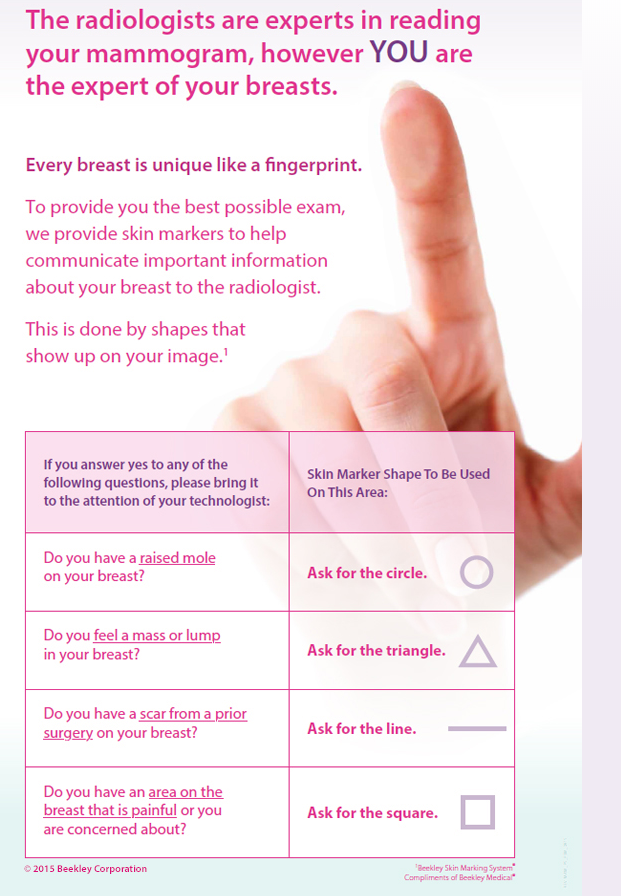
According to the Centers for Disease Control (CDC), 10% of all new cases of breast cancer in the United States are found in women younger than 45 years of age. While breast cancer diagnosis and treatment are difficult for women of any age, young survivors may find it overwhelming.
As a result, the CDC’s Division of Cancer Prevention and Control is working to increase awareness of breast cancer in order to improve the health and quality of life of young breast cancer survivors and young women who are at higher risk of getting breast cancer.

The Bring Your Brave Campaign is targeted at raising awareness in women younger than age 45 by sharing real stories about young women whose lives have been affected by breast cancer.
In addition, the Advisory Committee on Breast Cancer in Young Women helps the CDC develop evidence-based approaches to understanding and awareness of breast cancer among young women.
Why conversations with younger women about breast cancer matter
While there may be debate about the age to begin getting mammograms, women who are informed may be more likely to follow recommendations simply because they’ve been exposed to conversations about breast cancer awareness. However, in today’s increasingly digital society, those conversations may not be verbal.
Reaching younger women more in the most effective way
Research shows that women are the highest engaged audience on social media. In the U.S., more women use Facebook than men (74% vs. 62%) and women are 4 times more likely to create groups that become meaningful to people. ![]()
It stands to reason that the more information that is available and easier for women to share, the greater the reach. Because people are inherently visual, the power of a post with an image goes much further and has more impact than just words alone.
To reach this audience where they live, the CDC is expanding their reach on social media, making it easier to spread the word and educate all women about screening mammography.
Their website also has a page devoted to campaign resources that are easily sharable by individuals, organizations, and healthcare facilities on websites, social media, or blogs.
A Common Goal: Save Lives
When it comes to breast cancer, we all share a common goal - to detect cancers at their earliest possible stages in order to saves lives. The imaging community adheres to the recommendation of yearly mammograms beginning at 40, especially as cancers developing at younger ages tend to be more aggressive.
In addition to community outreach programs by both imaging facilities and organizations like the CDC, Susan G. Komen, and the National Breast Cancer Foundation, the good work by Are You Dense and DenseBreast-info has led to conversations about the challenges of detecting cancers in dense breast tissue, which younger women tend to have, and resulted in breast density notification laws in 38 states as of this writing.
Manufacturers continue to refine imaging equipment so that radiologist can see more tissue detail than ever before, and researchers are finding ways that can help predict the likelihood of an individual’s risk of getting breast cancer through DNA testing so that no woman should be a statistic.
 All women benefit from the application of mammography skin markers during their exam, but younger women may benefit the most. In addition to positioning being subjective to the specific mammographer’s technique, the breast changes with age, pregnancy, weight gain, and weight loss.
All women benefit from the application of mammography skin markers during their exam, but younger women may benefit the most. In addition to positioning being subjective to the specific mammographer’s technique, the breast changes with age, pregnancy, weight gain, and weight loss.
The consistent use of mammographic skin markers to identify topographical landmarks and other areas of concern starting with the baseline exam and continuing with every subsequent exam helps the radiologist always identify the exact location of what is stable from year-to-year (such as moles or post-surgical scarring) from what is a potential new finding.
This is one of the reasons why the American College of Radiology recommends the consistent use of radiographically distinct markers to indicate palpable areas of concern, skin lesions, and surgical scars.
To help educate your patients about the use and benefits of skin markers, download this mini poster for your dressing or waiting rooms.
To educate your staff about the benefits of mammographic skin marking, “Advanced Skin Marking in Breast Tomosynthesis and MRI” is an online CE activity approved by the ASRT for 1 category A continuing education credit.
Related articles:

Kathy Kaschuluk
Product Manager
